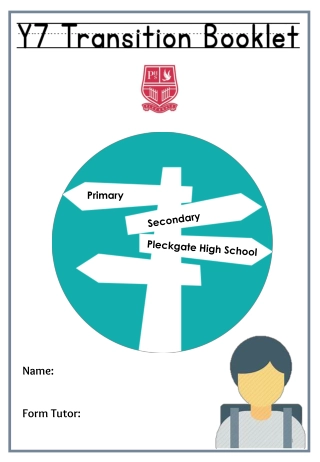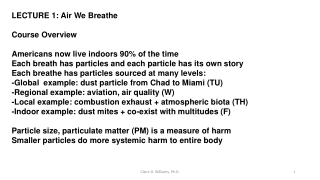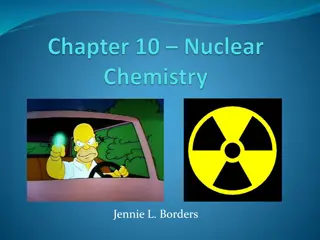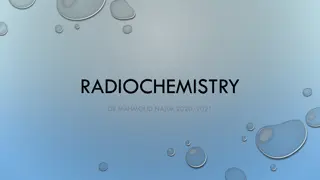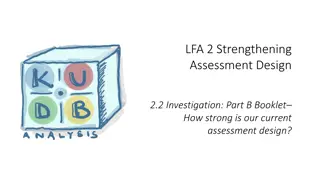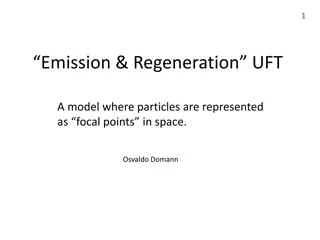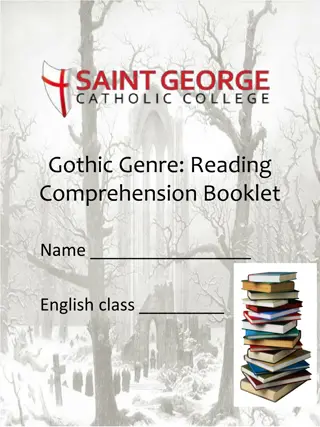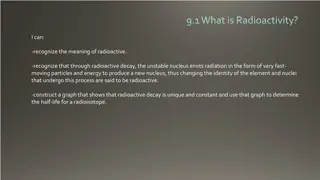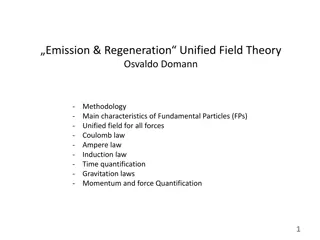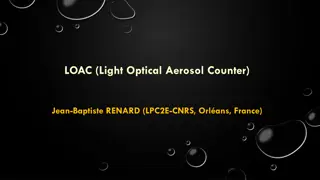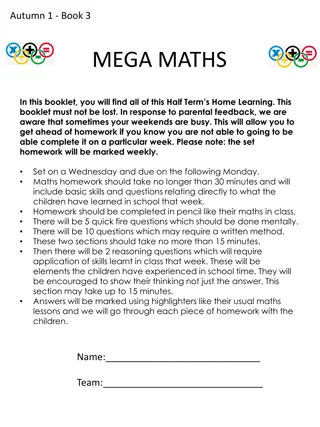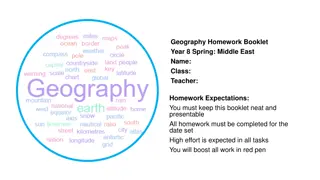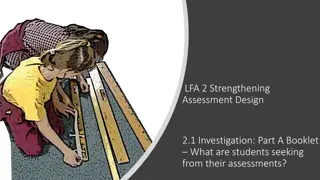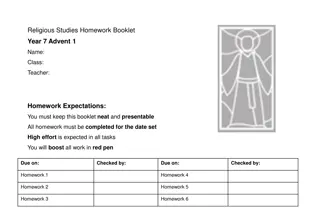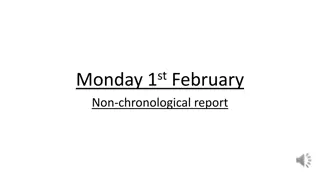
Exploring States of Matter: Particles, Properties, and Observations
Dive into the world of states of matter through the exploration of particles, properties, and observations in solids, liquids, and gases. Understand the fundamental concepts and characteristics of each state of matter while learning about their unique properties and behaviors. Discover how particles arrange themselves in different states of matter and challenge yourself with identifying and describing these states based on their properties.
Download Presentation

Please find below an Image/Link to download the presentation.
The content on the website is provided AS IS for your information and personal use only. It may not be sold, licensed, or shared on other websites without obtaining consent from the author. If you encounter any issues during the download, it is possible that the publisher has removed the file from their server.
You are allowed to download the files provided on this website for personal or commercial use, subject to the condition that they are used lawfully. All files are the property of their respective owners.
The content on the website is provided AS IS for your information and personal use only. It may not be sold, licensed, or shared on other websites without obtaining consent from the author.
E N D
Presentation Transcript
Name- Class- Year 7 Science G - Particles
Lesson 1: Solids, Liquids and Gasses date- Key words Particle - The smallest part of something Matter - The particles which make up everything State of matter - A way of arranging the particles Density - How close together particles are Substance - A thing Flow - To pour in a steady stream Volume - The space taken up by a substance Compressed - When the space between particles is reduced Learning objectives Describe the properties of solids, liquids and gasses Use the particle model to explain the properties of solids, liquids and gasses Do now: Answer the questions Solid, Liquid and Gas are three states of matter. What is in the glass? ___________________________________________________________ Which state of matter is the substance in this glass? ___________________________________________________________ Can this substance be in any other state of matter? Explain how. ___________________________________________________________ ___________________________________________________________ Can any substance be in different states of matter? Why do you think this? ___________________________________________________________ ___________________________________________________________ States of matter All matter is made up of tiny particles. New information Particles can behave in different ways, depending on how they are arranged. Particles can be arranged in many ways, 3 ways they can be arranged are called solid, liquid and gas. Discussion point Match each diagram above with a state of matter How many differences can you spot between the diagrams? These arrangements are called States of matter States of matter - Properties Make observations of 3 states of matter using the syringes.State Yes or No in each box in the table to describe the properties of solids, liquids and gasses. Can it change shape? Can it flow? Can it change volume? Can it be compressed? State Solid Liquid 2 Gas
Identifying states of matter For each substance, state and explain what states of matter it could be. You must use the information from the properties table Substance State(s)of matter Explanation It can change shape and flow but it can t change volume or be compressed Liquid Water Hair gel Shaving Foam Sponge Syrup Wood Polystyrene Custard Cotton wool Sand Describing states of matter In silence, join up a state of matter with the correct property 1, 2, 3 and a particle diagram. State of matter Property 1 Property 2 Property 3 Particle diagram Fixed shape Fixed volume Solid Not rigid No fixed shape No fixed volume Liquid rigid No fixed shape Fixed volume Gas Not rigid 3
Summarising states of matter First: Watch the video together: https://youtu.be/frFFoiXwqww Then: State if each property is High , Medium or Low for each state of matter. Some have been done for you. Property of particles Solid Liquid Gas Low Forces between particles Energy of particles Medium Space between particles Low Randomness of particles Movement of particles Size of particles 4
Lesson 2: Changes of state date- Key words Particle - The smallest part of something Matter - The particles which make up everything State of matter - A way of arranging the particles Density - How close together particles are Substance - A thing Flow - To pour in a steady stream Volume - The space taken up by a substance Compressed - When the space between particles is reduced Learning objectives Describe 4 changes of state Explain changes of state in terms of particles Do now: Answer the questions State 3 states of matter: _____________________________________________________ Which state(s) of matter can: Change shape? _____________________________________________________ Flow? _____________________________________________________ Change volume? _____________________________________________________ Be compressed? _____________________________________________________ Changing states of matter A substance can change state between solid, liquid and gas. Substances change state depending on the temperature and the pressure of the environment. A substances changes state when the particles in it start to behave in a different way. Discussion point In the diagrams A,B and C: State the state of matter of each Which is in a high pressure environment? Which is in a high temperature environment? How would you turn a substance from A to C? New information A B C Changing states of matter Fill in the boxes to describe changes of state. Use the following words once: melting, evaporating, condensing, freezing
Changing states of matter Look at the following diagrams. Which change in state of matter is represented by: A: ________________________ B: ________________________ C: ________________________ D: ________________________ C E: ________________________ F: ________________________ D G: ________________________ H: ________________________ I: ________________________ J: ________________________ K: ________________________ L: ________________________ M: ________________________ N: ________________________
Stearic acid cooling curve Watch the teacher demonstration on cooling stearic acid. As the stearic acid cools, it changes state. If you measure the temperature of the stearic acid as it cools and plot a graph of those results it looks like the graph below. A Discussion point Temperature ( C) B On the graph, what state of matter is the stearic acid in at each letter. C On the graph, what is happening to the stearic acid at stages B and D? D E Time (Mins) Melting point practical First: Follow the method Method 1. 2. 3. 4. Either place a solid substance in a test tube or take a prepared test tube. Place a thermometer into the test tube Place the test tube in a beaker of hot water Observe the substance and record its temperature when it has totally melted Then: Record the melting point of each substance State of matter Temperature ( C) Chocolate Lard Chocolate: __________ 28 Solid Solid Lard: __________ 29 30 Finally: Fill in the table to describe if chocolate and lard are solid or liquid at the given temperature. Some have been done for you. 31 32 33 34 35 36 Liquid Liquid
Changes of state review Circle the correct answers 1.If something has melted, what state of matter is it in? Solid / Liquid / Gas 2.If something has frozen, what state of matter is it in? Solid / Liquid / Gas 3.If something has condensed, what state of matter is it in? Solid / Liquid / Gas 4.If something has evaporated, what state of matter is it in? Solid / Liquid / Gas 5.If something has condensed, but not yet frozen, what state of matter is it in? Solid / Liquid / Gas 6.Is something has melted, but not yet evaporated, what state of matter is it in? Solid / Liquid / Gas The melting point of water is 0 oC The boiling point of water is 100 oC At -1 oC, has water melted yet? Yes / No At -1 oC, what state of matter is water? Solid / Liquid / Gas a. b. At 1 oC, has water melted yet? Yes / No At 1 oC, what state of matter is water? Solid / Liquid / Gas a. b. At 99 oC, has water boiled yet? Yes / No At 99 oC, what state of matter is water? Solid / Liquid / Gas a. b. At 101 oC, has water boiled yet? Yes / No At 101 oC, what state of matter is water? Solid / Liquid / Gas a. b. The melting point of ethanol is -114 oC The boiling point of ethanol is 78 oC 1. a. At -115oC, has ethanol melted yet? Yes / No b. At -115oC, what state of matter is ethanol? Solid / Liquid / Gas At -113oC, has ethanol melted yet? Yes / No At -113oC, what state of matter is ethanol? Solid / Liquid / Gas a. b. At 77oC, has ethanol boiled yet? Yes / No At 77oC, what state of matter is ethanol? Solid / Liquid / Gas a. b. At 79oC, has ethanol boiled yet? Yes / No At 79oC, what state of matter is ethanol? Solid / Liquid / Gas a. b. 8
Homework - Draw a cooling curve of stearic acid graph Time (mins) Temp C 0 80 1 74 2 70 3 66 4 60 5 60 6 60 7 60 8 57 9 54 10 51 Student Criteria Teacher (Tick if you think you ve done it) Labelled axis and included units Written an appropriate scale Plotted points accurately Drawn a line of best fit Homework 9
Lesson 3: Diffusion date- Key words Particle - The smallest part of something Matter - The particles which make up everything State of matter - A way of arranging the particles Density - How close together particles are Learning objectives Use the diffusion definition to state direction of travel for gases Describe and explain the factors which affect diffusion Plan an experiment to investigate the effect of temperature on diffusion Do now: Annotate (Draw on and around) the diagrams in as much detail as you can. You must use the following words at least once: Solid; liquid; gas; melted; evaporated; condensed; frozen New information Diffusion Diffusion is the passive movement of particles from an area (Without energy) Discussion point Which state of matter wouldn t diffuse? Why? (Smallest part of something) of high concentration to an area of low concentration. (How much of something is in a space) Diffusion diagram On the diagram below, label a particle, the high concentration area, the low concentration area and the direction of particle travel.
Diffusion video The below diagrams show bromine gas trapped in the test tube on the bottom and particles from the air in the test tube on the top. First: Predict where the particles will be after the barrier has been removed by drawing coloured or shaded circles. Before the barrier is removed After 30 seconds After 300 seconds After 60 seconds Then: Watch the video https://www.youtube.com/ watch?v=H7QsDs8ZRMI After that: Correct any mistakes you might have made in your diagrams How does temperature affect the rate of diffusion? There are several things which speed up or slow down diffusion. You are going to investigate how temperature affects the rate of diffusion. First: Read the equipment list Then: Write a method Finally: Self assess your method by ticking the method criteria you think you have fulfilled Glass ware (Beakers, test tubes etc) Equipment list Hydrochloric acid Pink jelly cubes Water baths Stop clock Method ________________________________________ ________________________________________ ________________________________________ ________________________________________ ________________________________________ ________________________________________ ________________________________________ ________________________________________ ________________________________________ ________________________________________ ________________________________________ ________________________________________ ________________________________________ ________________________________________ ________________________________________ ________________________________________ ________________________________________ ________________________________________ Student (Tick if you think you ve done it) Method criteria Teacher A numbered list How to set up the equipment How to measure the dependent variable How to change the independent variable How to control the control variables Temperature (oC) Time taken to decolourise (s) 1 2 3 Mean 20 30 40 50 60
Link it! Read the key words and think about how they are linked. Solid has been done for you. Draw and label lines between other keywords to show how they are linked. Describe as many links as you can. Examples of a state of matter Liquid Solid Gas Examples of a state of matter Freeze Heating Diffuse Evaporate
Homework - Draw a graph describing the effect of temperature on the rate of diffusion Temperature (oC) Time taken to decolourise (s) Criteria Student Teacher (Tick if you think you ve done it) 20 235 Labelled axis and included units 30 160 40 106 Written an appropriate scale 50 62 Plotted points accurately 60 35 Drawn a line of best fit Homework 13
Topic review - Answer the following questions. Use the information in the booklet to help Question Answer Question Answer What is the definition of diffusion What is everything made from? What state of matter best matches the following definitions: Draw a diagram representing diffusion Randomly arranged particles that fill the volume of the container they are in. Regularly arranged particles which vibrate around a fixed position How does temperature affect diffusion? Randomly arranged particles which flow past each other Revision Draw a particle diagram representing a solid What are the following changes of state: Gas to liquid Draw a particle diagram representing a liquid Liquid to gas Liquid to solid Draw a particle diagram representing a gas Solid to liquid
Describing and explaining results In Science you will often be asked to describe and explain results from practicals or experiments. Describing means saying what the results are and if there are any patterns, like increases or decreases (You should not say the word Because in a description) Explaining means saying why the results are that way, using Scientific knowledge (You should use the word Because in an explanation) Because his father had brown hair (He inherited them from him) Because Lord Voldemort performed a killing curse on him as a baby but it backfired He has brown hair He has a lightning bolt shaped scar on his forehead Because his mother had green eyes (He inherited them from her) He has green eyes He has a red and gold coloured scarf He has a wand Because he is in house Gryffindor Because he is a wizard 15


